Prashant Aswani on his guitar journey: “My brain was ready… I was driven. Greg Howe could play anything, anytime. I wanted to achieve that, so I had a standard to get to”
Aswani discusses session playing, his new Charvel, meeting Shrapnel’s Mike Varney and learning from the great Greg Howe, and how the irresistible power of rhythm set him on his way
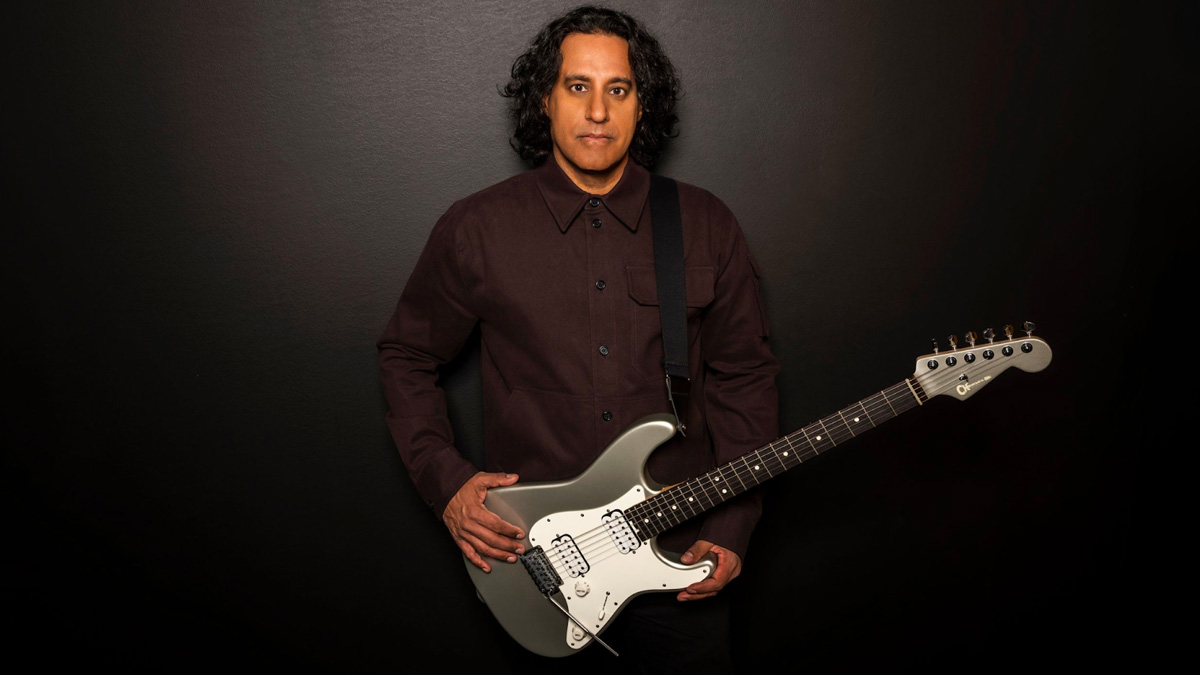
Prashant Aswani is one of guitar’s great unsung players, the session champ who has played with some of pop’s biggest stars, Christina Milian, Justin Timberlake.
We can examine his technique, an ample body of work on electric guitar, and learn much from it. But to really understand what makes him tick, we’ve got to go way back to when he was a kid, before he even touched a guitar.
Some top-shelf shredders – Nuno Bettencourt springs to mind – will tell you that they are frustrated drummers, that they bring that rhythmic sensibility to the guitar. Aswani is similar, except that he is not so much a frustrated drummer but a player who discovered music on percussion, playing tabla as a child.
He might not have understood what was going on yet but it give him a sense of timing that would earn him the nickname the ‘guru of rhythm’, and it would stand him in good stead when he enrolled at Berklee, when a chance encounter driving his good friend and former Volbeat guitarist Rob Caggiano to meet Shrapnel Records founder and shred impresario Mike Varney ended with Varney arranging lessons for Aswani with the great Greg Howe.
That was the catalyst for Aswani to take his playing to the next level, and Howe turned from teacher to collaborator, eventually producing his debut LP, Revelation.
Here, Aswani charts that journey, and discusses his relationship with rhythm, how it informs his playing, and how all roads led to his new Charvel signature guitar.
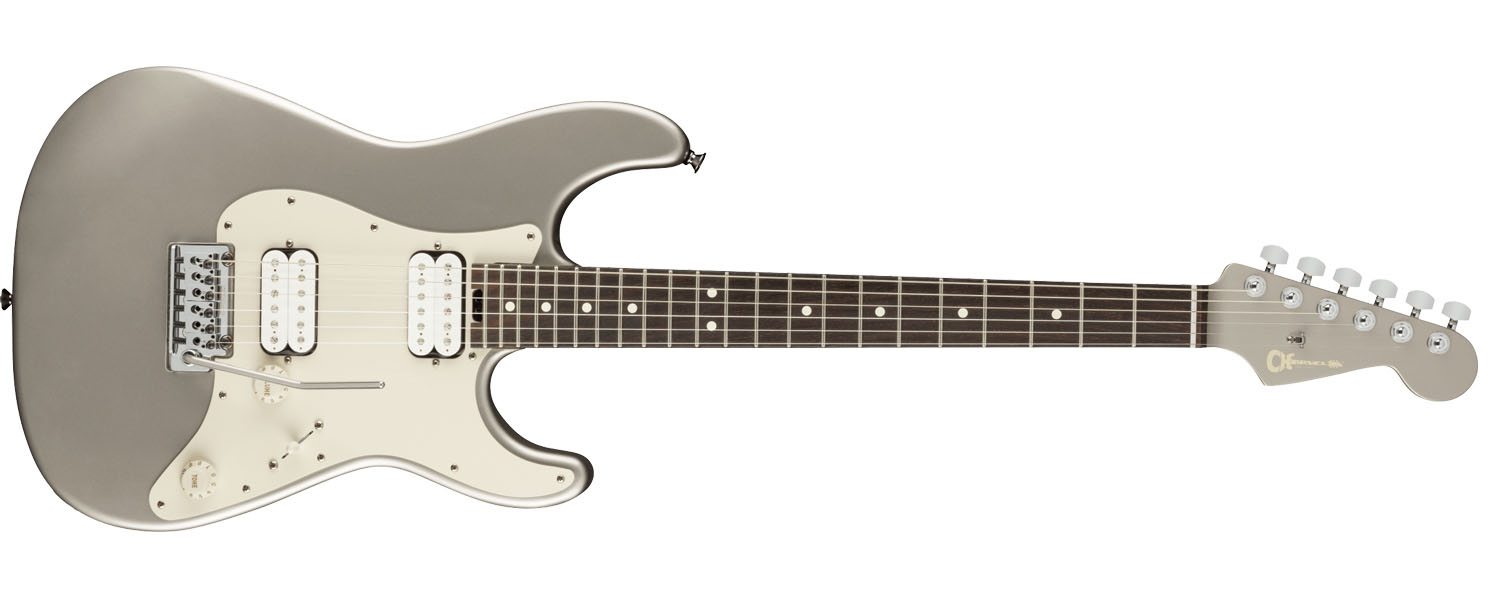
Prashant, your journey on guitar is fascinating. There’s this story that you weren’t even allowed to touch the instrument at first. Tell us about how you got into all this and how that shaped your musical sensibility.
Want all the hottest music and gear news, reviews, deals, features and more, direct to your inbox? Sign up here.
“Y’know, I’m not entirely sure if at that age I had that awareness. I think one thing that it did do is make me realise that there was a discipline to this craft of music, right? This art form.
“And so, in the back of my mind, whenever I was learning a piece or creating, or whatever it may have been, discipline was always something that kinda stuck. ‘I have to keep at it before I give up!’
“Because a lot of times, when writing music, or learning something new, it’s challenging! And so giving up was never really an option, and that’s what it gave me. ‘Don’t give up!’”
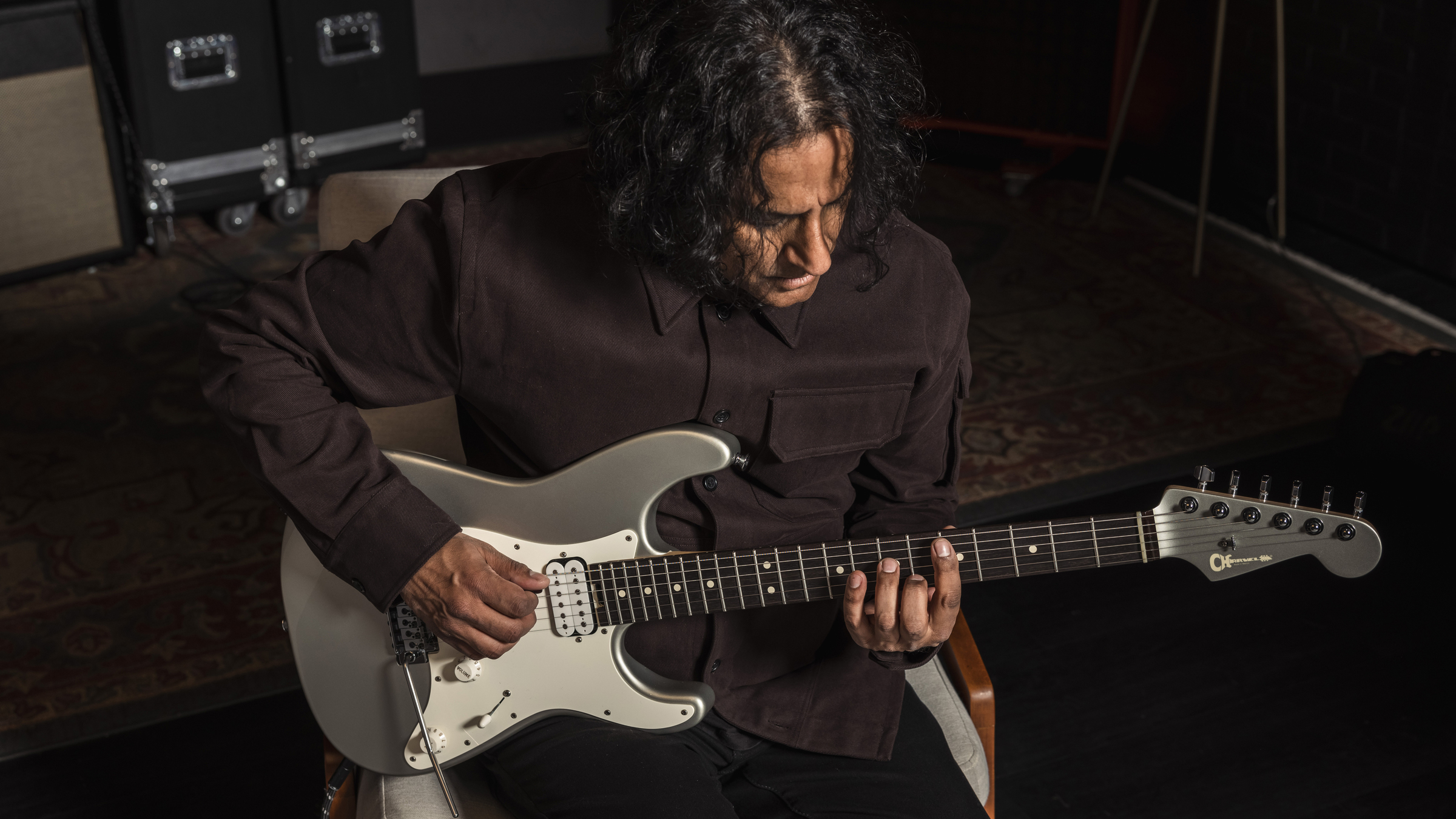
Players like Nuno Bettencourt and Paul Gilbert will say they want to think like a drummer on the guitar. Was that something similar with you, starting with percussion?
“Yeah, 100 per cent. I am rhythmic more than anything. More than anything, rhythm was ingrained in me, and the love for the rhythm that tabla can create was what drew me to that.
“The melody and the harmony, and all those things, came later. For sure, I even viewed guitar as a rhythmic instrument. The first modern music albums I got was like AC/DC Back In Black, and I think Flock Of Seagulls or something like that.
“And so rhythm was present in those, and that’s what drew me into guitar – especially Angus and Malcolm [Young]. The power they had hitting three chords with the backbeat. I mean, the drums of Phil Rudd were so in the pocket. It was simple but the guitars were able to shine I think because of that groove in the background.
Any time I sit on a drum set or play a percussion instrument something happens to me physically and I just get in a better mood
“I kind of stabbed at the guitar like a rhythmic instrument at first, and I think musically, moving forward, I have all kinds of rhythmic single-note riffs in all of my records. That for me is a very important element that I got from tabla. And I do think that way when approaching guitar.
“Obviously, melody and harmony definitely play a huge role now because I understand that a listener can really connect with a melody, but there has to be a pocket or a groove behind there of some kind that is real and substantial.”
That is the fundamental, isn’t it, because there are so many rock backs out there who might play a style comparable to AC/DC but they don’t have it, they don’t come close because they don’t have that feel for rhythm. It transforms the simple into something special. It is the law of physics for music.
“I would say you are 100 per cent right. There is something to be said for playing a drum set, or playing a percussion instrument, and what it does physically to the body – and to anybody for that matter. Whether they are musically inclined or not, banging on a drum has a very relieving kind of effect, and it keeps you kind of in the moment, and so I like to attach science to this.
“I mean, I haven’t studied it officially at all but just from my own experience I can say that any time I sit on a drum set or play a percussion instrument something happens to me physically and I just get in a better mood. Even if I am already in a good mood I just get in an even more uplifted mood. It is very strange.”
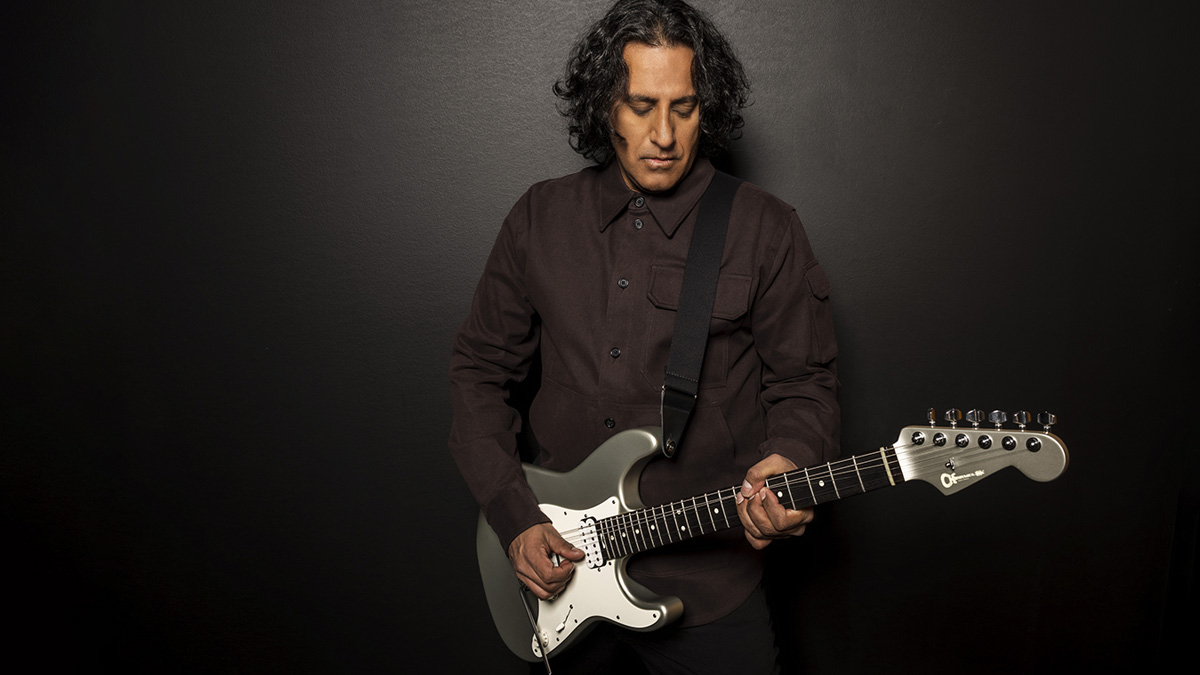
There are some strange things on the internet but one of them said that you would travel four hours to learn from Greg Howe. Is this true?
“Yeah, the story has gotten – well, there’s all kinds of stories online, right. But the actual story is this. I was at Berklee College of Music. I think I was 18 years old, and Rob Caggiano, the [former] guitar player from Volbeat, he and I were inseparable. Best friends growing up in college.
“He made a demo to share with Mike Varney. We had a meeting with Mike Varney. [Rob] flew in from New York. He stayed at my pad in the Bay Area. We were on a Christmas break or something like that, so I drove us to go see Mike Varney, who was an hour-and-a-half north. I literally was the driver, helping my friend out. I had no aspirations. I knew who Mike Varney was but it was way unobtainable for me at that age.
“We were at Mike Varney’s house. Mike was incredibly kind with the demos. He was talking with Rob. I was just sitting there quietly. And then Mike, after an hour or so of dialogue with Rob, he asked me what I liked on his label, what I did, and blah blah blah. And I was like, ‘Y’know, there is an album by a guy called Greg Howe called Uncertain Terms, and that album has a crazy rhythm. It’s insane. I love that album.’ And he’s like, ‘Well let’s call Greg!’

“So he calls up Greg Howe, with both of us there, and he goes, ‘Do you want to take lessons with him?’ I was like, ‘Dude, that would be amazing!’ He asked Greg if he could give us his number, so Rob and I had his number – and there were no cellphones then. I called up Greg when I got back to Berklee, and so the way to go to his house in Easton, Pennsylvania, from Boston was I had to take a bus to New York and then I had to take a bus from New York to Easton, PA. It took a bunch of hours.
“I think I took a four-hour lesson – that’s all I could afford. Then I did another four-hour lesson, so I did two lessons. In the second I said, ‘Hey, man, can we do a record? Would you produce a record for me?’ And he said, ‘Do you have any tunes?’ And I said, ‘Yeah, I’ll get you tunes.’
“The third time I went I brought three songs that I had demoed out and he’s like, ‘Okay, let’s do it!’ We started programming drums, and we finished like all the beds, all the rhythms for all three songs were done in one six or eight-hour day. And we knocked it out. So then he was like, ‘You’ve got to make melodies and stuff, and solos.’ And that was the start.
I started working on my first album, Revelation, after a couple of sessions with Greg. The lessons had morphed. I had aspirations of making records – especially after that meeting with Mike Varney. I was on fire to do this
“I started working on my first album, Revelation, after a couple of sessions with Greg. The lessons had morphed. I had aspirations of making records – especially after that meeting with Mike Varney. I was on fire to do this. And we made a record! It’s nine songs, and we did it three songs at a time.
“There’s more to the story but that’s how my working relationship started with Greg, and he produced my first record, then my second record, and then I think he used a song from my first album and my second album to be featured on two of his records. I don’t remember exactly which. It was a while ago but I was in essence featured on two Greg Howe albums. I think Ascend and maybe Hyperacuity.”
As origin stories go, that’s not bad… Starting out with some lessons with the shred sensei upon high and ending up making a record together.
“Yeah! And I wasn’t really shy about it. I was at Berklee to achieve something, so I wasn’t really shy about asking. I was just grateful that the guy said ‘sure!’ Obviously, I still had plenty of development that was needed for me as an artist, and Greg really took the time. The development came from not so much learning licks as from stories that Greg had, like about his early time with Mike, and how bending was super important, and vibrato was super important.
“The thing that really made a Shrapnel guitarist Shrapnel, he taught me. He taught me those concepts, and then I would go back to Berklee and ditch the homework and I would be working on those concepts for hours, and I had a ton of hours to do it. Between working in a coffee shop as I was supporting myself through college and going to class, I was working on those concepts trying to get them into my playing and really develop my own sound. That was the key.”
Sometimes those stories are even more important than one single tip. It’s like the power of narrative can help make sense of all this, make you visualise it and become a creative being.
“You are 100 per cent correct, and obviously I have tremendous respect for what Greg has accomplished as a musician. You combine that with my youth – my brain was ready to absorb all sorts of knowledge – and I was driven. Watching Greg Howe play, he could pretty much play anything, anytime. I wanted to achieve that, so I had a standard to get to.
“But in that same breath, I understood, from Greg, and from Mike Varney, that developing my own sound was critical, so copying Greg wasn’t really something I was interested in doing – it was more emulating the path of trying to get your own sound. Because Greg definitely his own compositional sense and his own style of playing.”
There is already one Greg Howe. There is no point in trying to be another. All of these players have something that’s unique, and we can steal from them and use it, but the important thing is your own thing. Where was Berklee in all this? Was it worth it?
“Berklee? Yeah, totally! Yes. Berklee was such a good experience, for many reasons actually but one of them [was] I didn’t know anything about music. I didn’t know how to communicate music. I went to Berklee pretty much as an idiot when it came to music, to put it lightly.
“I understood that communicating music and playing music at a high level professionally required some knowledge, so I dove right into what I didn’t know anything about. I studied jazz composition. And I did really well. I had great teachers to help me do really well. I think because I was an ear player for the years prior, I think my ear was really well developed by that point.
“I did well with the exams when they would push ‘play’ on a Charlie Parker solo or a John Coltrane solo. I could figure out what was going on, and analyse it through ear, and write out the notes. My ear training and all that stuff was pretty advanced. I just didn’t know how to apply it and they helped me connect the dots. That knowledge helped me in the future, playing with other artists and other musicians.
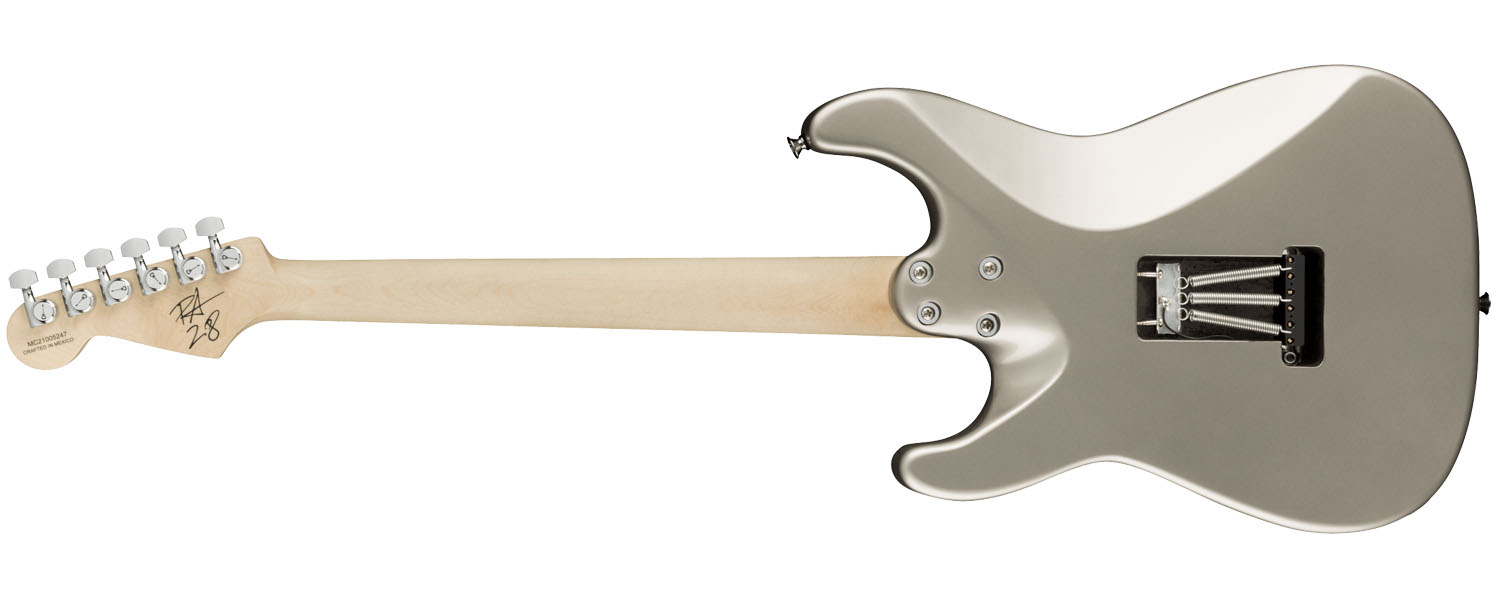
“Do I utilise theory now in my artistic career? No, I don’t really. Does it exist when you analyse my songs? Of course. But I don’t really think about it. But [Berklee] was definitely worth it for that reason alone. And then I would say, being in an environment where it was all music, and it was kind of competitive, was really good for me.
“I was very fortunate because I had a couple of good teachers early on and I got to do this thing called Guitar Night in my third semester there, and it’s like the highest owner you can get for a guitar player. They choose like six or seven guitar players to represent different styles, and John Finn gave me that opportunity. I had a lot of encouragement. It gave me confidence.”
Arriving there, with that sense of rhythm, that ear, you must have had some degree of confidence going in, even if all the theory and so forth was a mystery.
“It did! Because once the dots were connected it was like, ‘I guess I do know stuff! I guess my ear is at a pretty good level.’ But that has to be explained to a person, I think.”
You don’t know what you don’t know and vice versa.
“Exactly, yeah! And I got some good responses from the compositions I wrote. I have always written music, since the beginning of me picking up a guitar I have always been interested in writing. That has been a passion of mine from day one, I can say, and I think I just have that type of personality or whatever you want to call it.
“I pick up an instrument and I want to pick up something new that I haven’t necessarily heard myself play or heard someone else play before. And that takes a lot of hours, and it’s a lot of meandering initially. [Laughs] A lot of nonsense comes out! But that goes back to the thing of discipline, not quitting. I was able to get through all of the horrific sounds I made to finally come up with something that was palatable.”
Did Berklee give you the skills to be comfortable in a session environment?
“Well I would say sitting in a room a couple of feet away from Greg Howe was all the pressure I needed to get me prepared for the real world. Greg wasn’t easy on me when I was tracking. Sometimes he was a dick! [Laughs] To the point where it was like, ‘Come on, man. I can’t get it now. I don’t even feel good.’ But that was good for me in the big world!
“And having a mentor that early on of that calibre – and lack of patience for bullshit, my playing – was good. I didn’t necessarily enjoy it at the time but I think it was really healthy for me because in a session environment you’ve kind of got to nail it, man, or it’s done. Or it’s like, ‘Go home. You’re not the right guy.’”

You almost have to arrive in the studio fully formed and ready. Do you have a process when taking on sessions? Or when pitching for one?
“That’s a good question… Nowadays, I’ll get hired to play on stuff and I have got my own studio and I’ll just send them the tracks, so very rarely am I going in for a live session and if I do you have plenty of time to prepare. Even if you have some hours prior, you can prepare parts.
“I mean, it is not what it was like in Steve Lukather and Mike Landau’s day, where you come in, and everything would be top secret – you wouldn’t have even heard anything! You gotta just, BOOM! Go!
“And that’s what makes them legends, because not only did they have that opportunity because that’s how recording music was done back then. But they shined and created some of the most renowned parts that we hear today and singalong to – and in all kinds of music! Those opportunities were not really available after a certain point when I became professional.”

Now it has become so easy to do things digitally, and that makes it easier to collaborate, but then you miss that energy of being in the room with people.
“Feeding off of personalities in that way has definitely gone… Well to some degree. Obviously, you find a way to do it. I want to interact with whoever I am working with, somehow, and that can be a phone conversation or a hang, but for the most part, when I am recording I am recording, I am just getting the stuff knocked out, and I have my own process.
“My process now for anything is that I will record everything that I am doing and then if I hit a part after a few passes I’ll be like, ‘Okay, that’s the part.’ Then I’ll learn it and record it for that song. So I’ll just improvise. And I’ll do the same thing with my own records.
“I’ll improvise and I record everything and it’s like, ‘Oh great! This is the new tune. This is the new section. This is the melody.’ It is really easy for me to do that now because you don’t have tape; you don’t need all these big-ass machines to get stuff recorded. It’s all on a hard drive and I can delete or keep what I do.”
We must ask you about this guitar. It’s brilliant. The no-fuss of the tremolo is brilliant, because Floyds are great but sometimes they’re annoying. What is the story with this bridge – Pete Thorn was involved?
“I don’t know! Wilkinson makes the bridge, and I saw it first on one of Pete Thorn’s Suhr guitars, and I don’t know Pete at all but I asked him on social media about the bridge and he said it is really good. I asked Charvel to modify one of my guitars – because it is a different route – but I didn’t want to just put the saddles on I wanted the full bridge to see what it was like.
“They routed a guitar that I had, got it ready for this bridge, ‘cos I wanted it to have a recess. Pete Thorn, I guess, has it top-mounted but that’s not really my thing. I pull back on the bar. So I had a recess. And I liked it. It functioned really well.

“There are three reasons I didn’t go with the Floyd on my guitar. One, aesthetically, I wanted it to look like a Strat. I wanted it to look vintage. Two, it is the best 2-point Strat-style bridge in my opinion, that functions, in terms of the way the bar is, in terms of how rigid and stable the bridge is – the locking saddles of course.
With this guitar, I can change strings and it’s a 10-minute break, and I’m ready to go
“And then the other reason was that the string changing is effortless. I don’t have to cut the ball ends. I just put the strings through, lock ‘em down, lock ‘em at the tuners, stretch out and I am in. That’s really important, because when doing sessions, sometimes in the middle of recording – and when recording I am playing for hours and hours and hours at a time – strings are going to die.
“Sometimes I’m in the middle of something and strings won’t be vibrant and I won’t get the harmonics I need and have to change strings. A lot of times I would just swap guitars. Prior to having this signature guitar, I played all kinds of guitars and the reason why was I needed fresh strings in the studio or whatever – or a different sound for a different part. With this guitar, I can change strings and it’s a 10-minute break, and I’m ready to go.”
Also, when you are a session player you don’t want to be the skunk at the party when the singer is struggling at one pitch and suggests going down half-a-step. And you’re looking at the Floyd…
“It’s not gonna happen! You can do that one this guitar relatively quickly, and drop D is really easy. The bridge is quite stable. It changes the angle [of the bridge] because of the tension but Drop D is super easy. There are a lot of reason why I love this guitar.”
It’s one of those guitars that just gets out of the way and lets you play.
“That was the goal.”
We used Alnico III magnets, which I thought were the best PAF sound, and we overwound them slightly, 9K at the bridge, 8.5K in the neck
It feels like that. It has the visual pizzazz but with that five-way switch you don’t really need a single-coil.
“No, so the in-betweens – I’m glad you brought that up because the electronics are super thought out. A lot of people are mentioning some signature pickups I have but the reality is, if I was going to have one guitar, and play one guitar for 80, 90 per cent of things for that I play, we really needed to have split positions that were incredibly accurate to what I was looking for.
“The way Charvel made these pickups, we designed them together. I had the concept we wanted. We used Alnico III magnets, which I thought were the best PAF sound, and we overwound them slightly, 9K at the bridge, 8.5K in the neck. We used 42 gauge wire, which is kind of a vintage wire, but the pole pieces are accurately spaced, F-spaced, for a Fender-style bridge.
“They are waxed so they don’t make noise with high-gain. But the split, the way that we did it was that each of the switch positions, it has the two back coils, then the two inner coils, so you don’t really have volume drop the way they are designed – and they are hum-cancelling! So it’s remarkable, man. They really nailed the electronics on this guitar. It’s super premium, custom-made pickups for this guitar.”
What else is in your rig? You’re not really one for running much in front of the guitar amp.
“No. I’ve got nothing in front. I just plug straight into the front of the amp with the guitar.”
But you have some very expensive guitar amplifiers!
“[Laughs] I do. I’ve got some really nice amps. You’re right. But a delay in the loop, basically.”
What’s the one bit of advice you would give young players for finding their own sound?
“If it sounds good to whoever is playing, if it sounds good to them then that’s all that matters. That is all that matters, right? I know this might sound horrible but I am not playing guitar to impress someone. I’m playing guitar because I want to create something that I like first, and if I like it, then others do too, then that’s awesome.
“That’s my approach to playing music. It has got to be good to me. Because if it is not good for me, it doesn’t matter how many people like it. If I don’t like it, I’ve got to live with myself. Regardless of what anyone is playing, whether it is technical or simple or whatever, if they enjoy what it is that’s coming out of their hands and brain then keep doing that. Eventually it’s going to stick.”
- The Prashant Aswani Signature Pro-Mod So-Cal PA28 is out now. See Charvel for more details.
Jonathan Horsley has been writing about guitars and guitar culture since 2005, playing them since 1990, and regularly contributes to MusicRadar, Total Guitar and Guitar World. He uses Jazz III nylon picks, 10s during the week, 9s at the weekend, and shamefully still struggles with rhythm figure one of Van Halen’s Panama.
